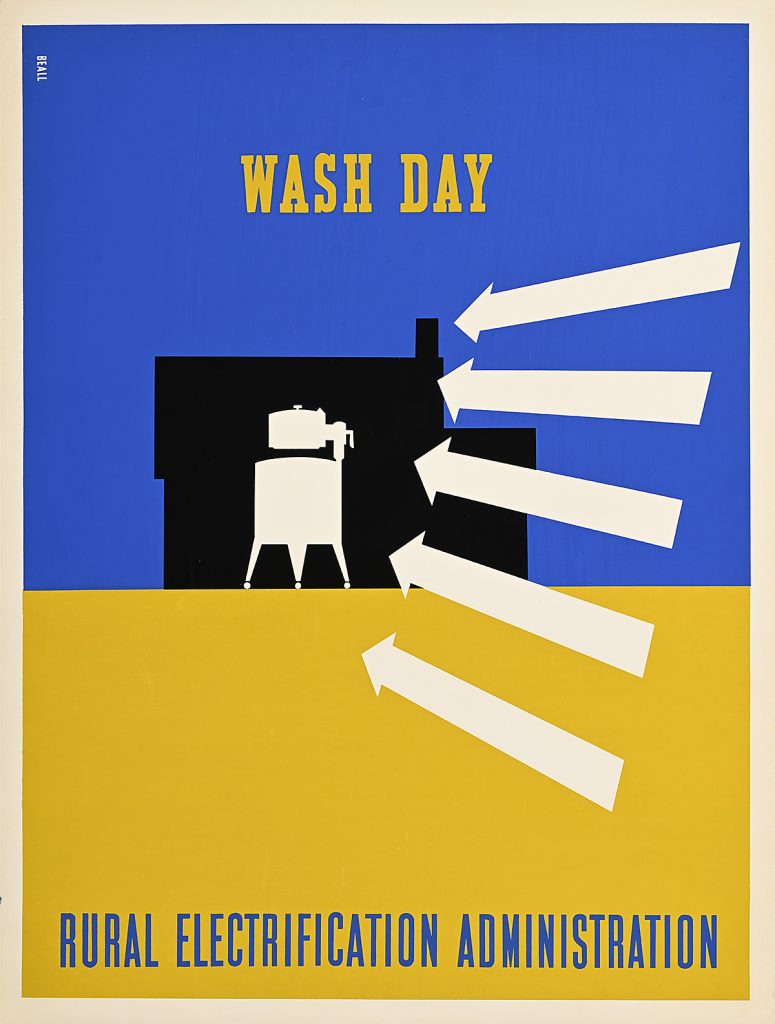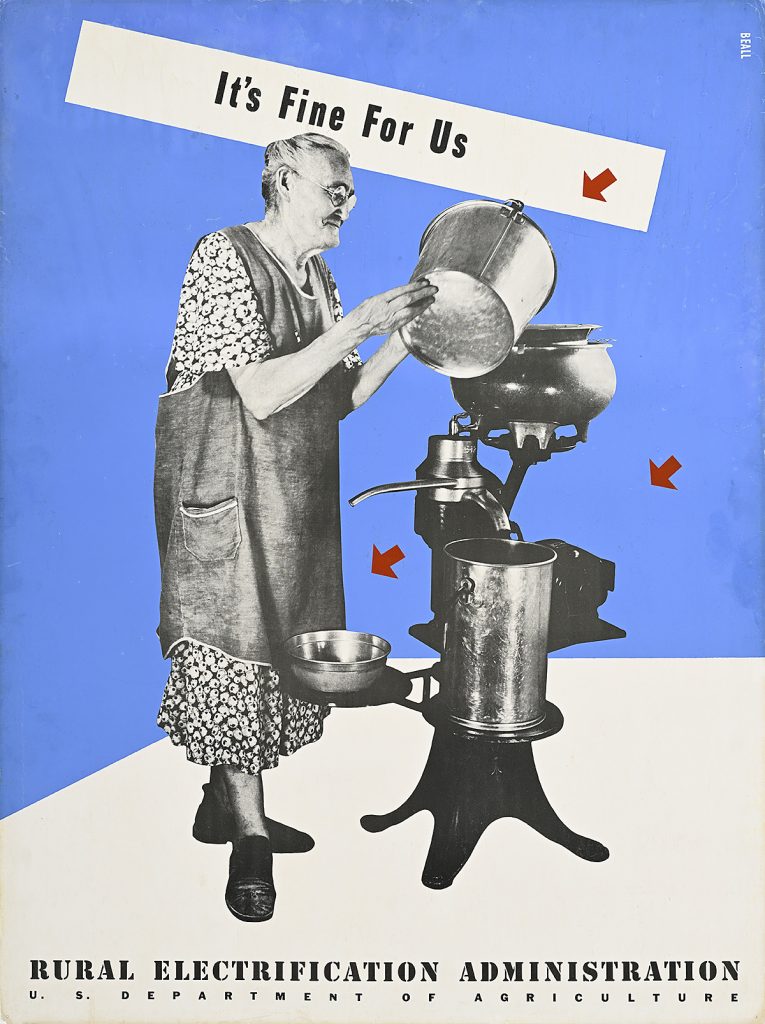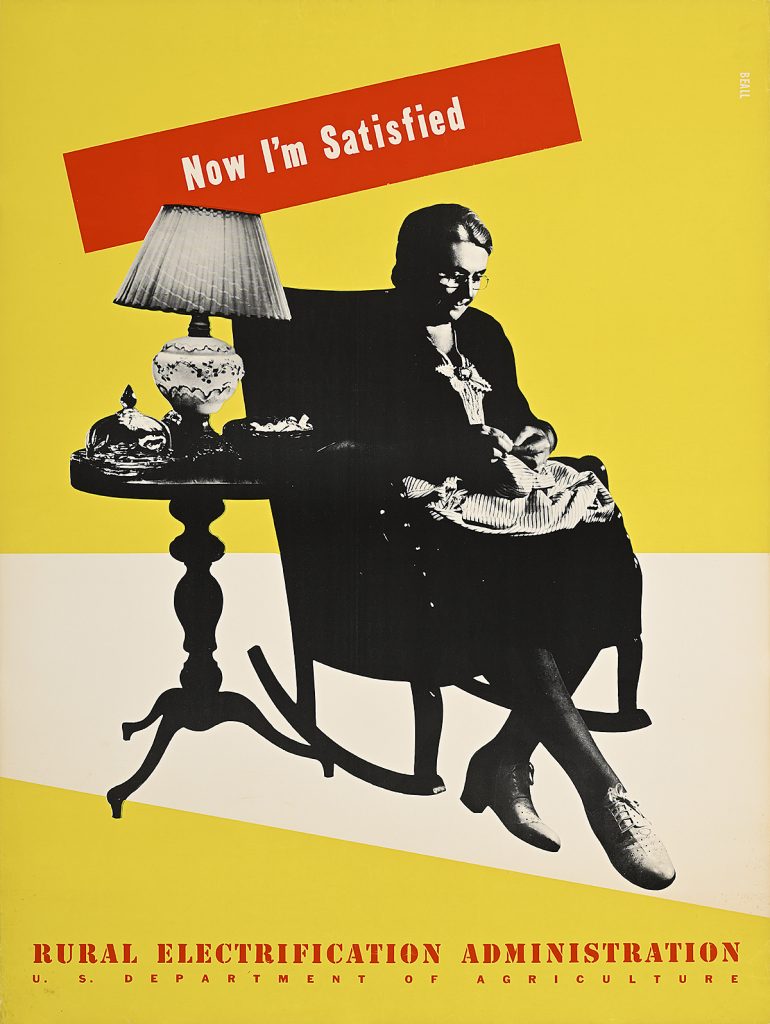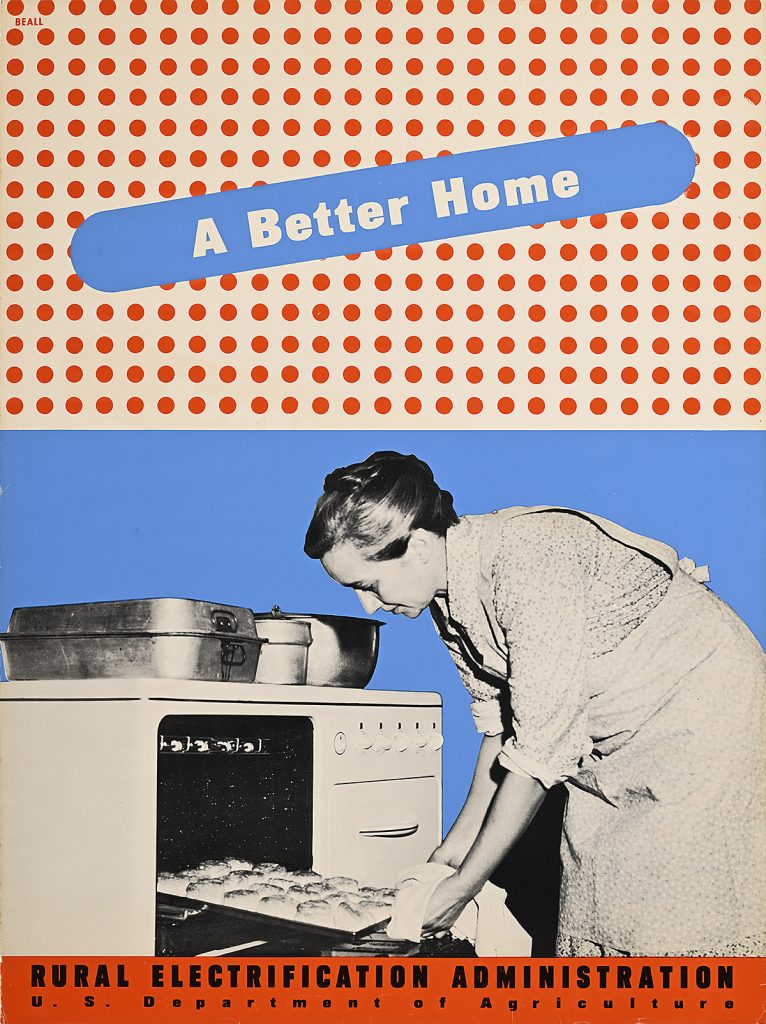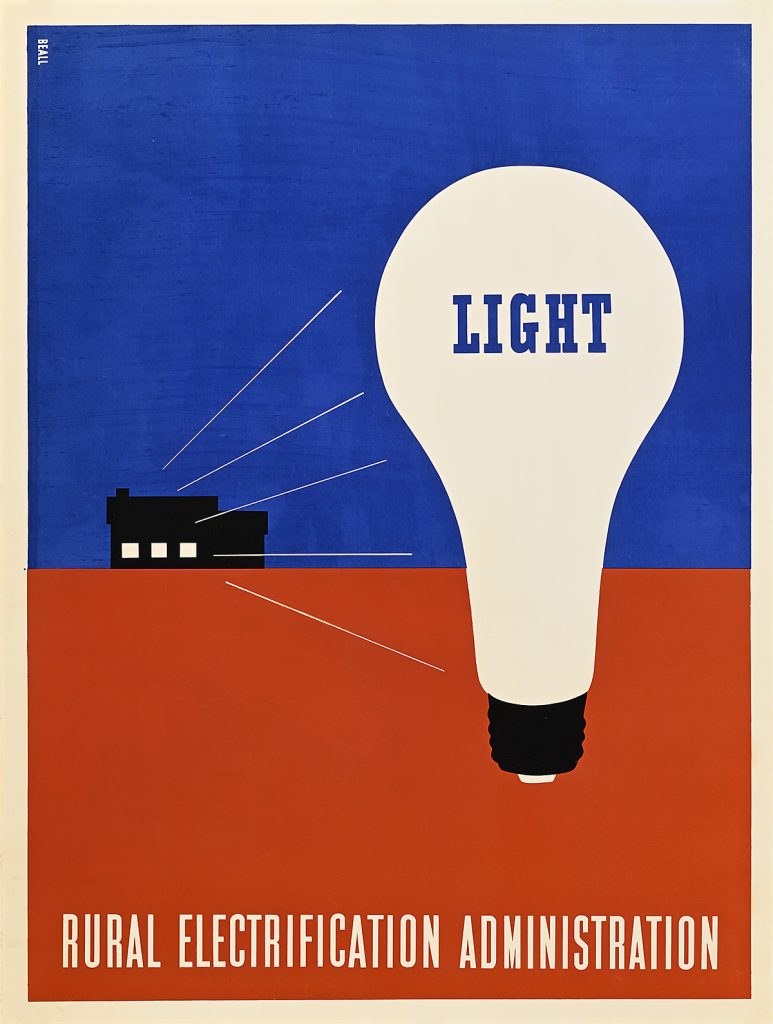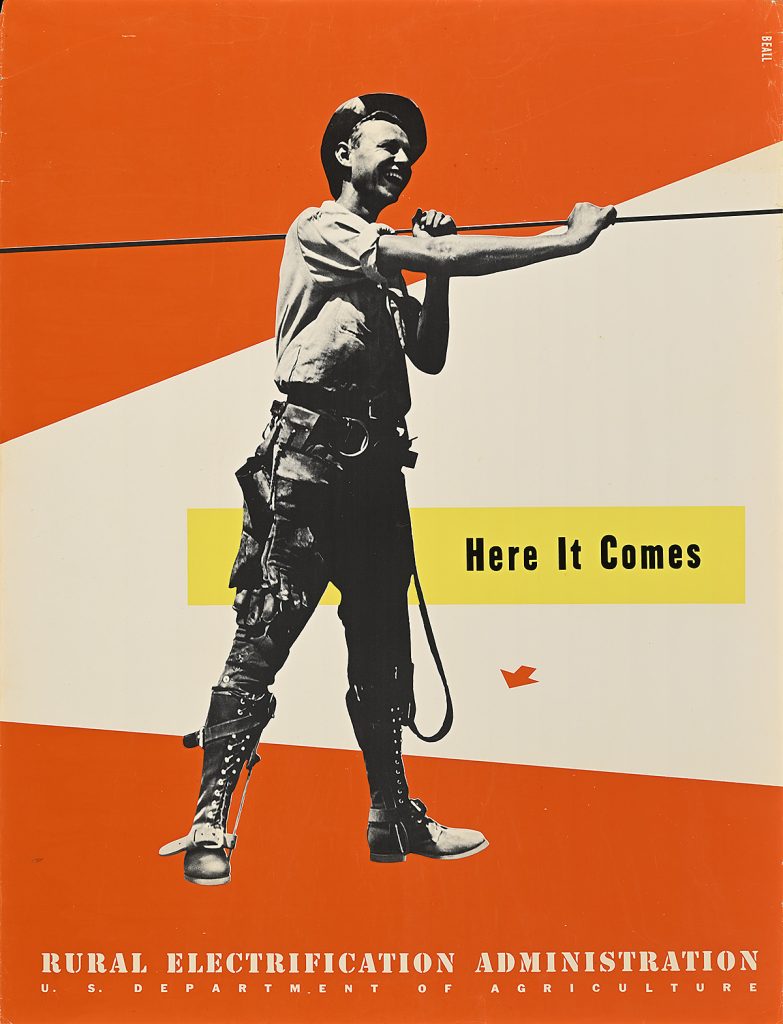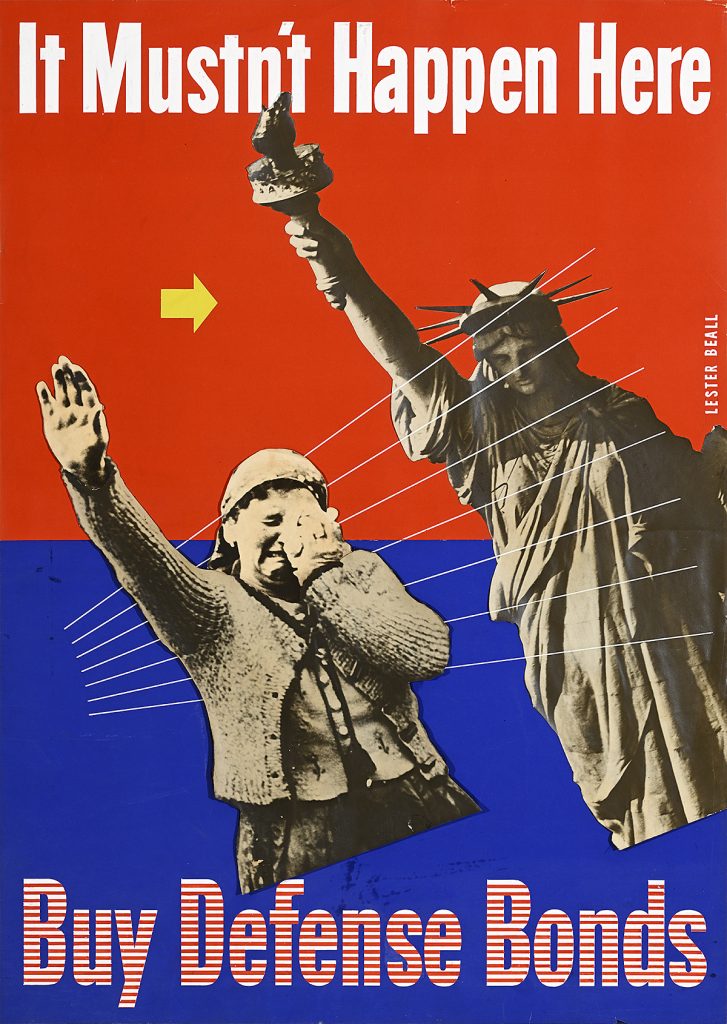Lester Beall & A New American Identity
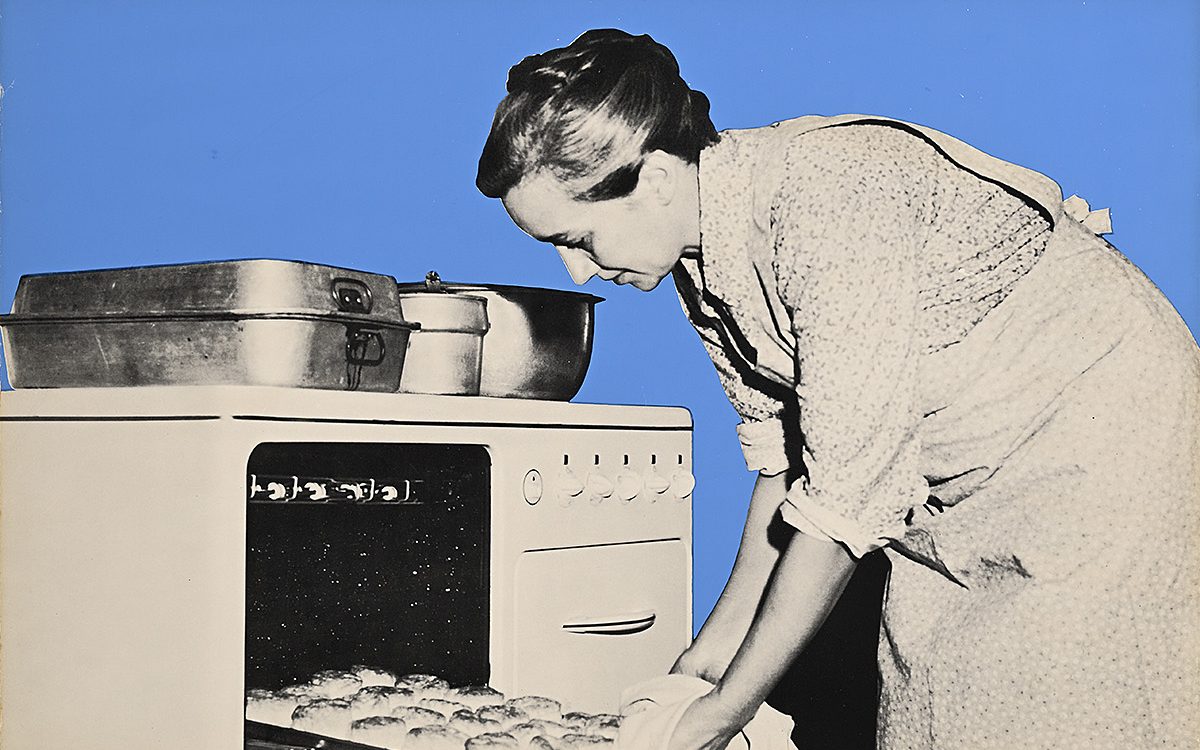
In 1933, newly elected President Roosevelt initiated what became known as the New Deal, a series of federal programs and agencies designed to spearhead economic recovery from the Great Depression through public services, regulation, and new jobs. Among the programs his administration created in 1935 was the Rural Electrification Administration (REA). Managed by the Department of Agriculture, the REA helped build energy infrastructure in areas where private companies refused to operate, extending electricity to remote areas with small populations. Lester Beall was hired to advertise the REA’s work, creating three series of posters over a five-year span.
Knowing that Americans were generally distrustful of overly intellectual and visually obtuse European modernism, Beall deftly translated and advanced these artistic concepts to create a new kind of American art, one that distilled the heart of various avant-garde movements with the need for clear communication and the desire to sell. This exhibition highlights the groundbreaking work Beall produced for the REA, as well as the development of his contributions to American modernism up through World War II.
This is the first time where all posters from all three REA series will be on view in a single show.
This exhibition would not be possible without the support of Mark and Maura Resnick and Michael Kleeman.
This program is supported, in part, by public funds from the New York City Department of Cultural Affairs in partnership with the City Council, and the New York State Council on the Arts (NYSCA).


Press
Selected Images
